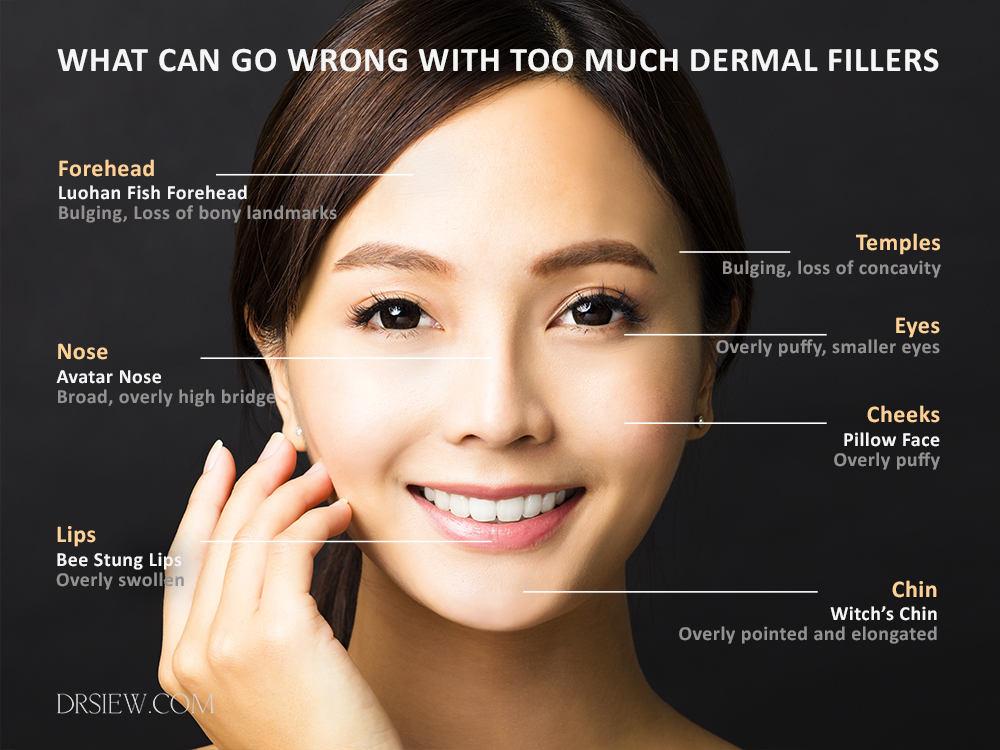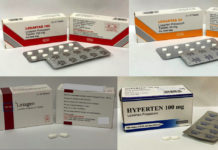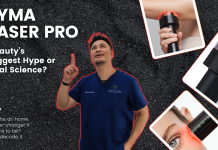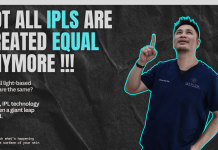
Dermal fillers are one of the most important treatments in the fight against aging. It has changed the way we approach and view anti-aging procedures. When the first hyaluronic acid filler Restylane was approved in 2003, it ushered in a new era in cosmetic medicine.
Together with other treatments such as Botulinum Toxin and non-surgical threadlifts, dermal fillers and non-invasive procedures now make up the largest growing portion of the aesthetic medical market. Minimally invasive procedures have risen 180% since 2000, with more than 15 million procedures performed in the USA alone.
Dermal Filler Procedures Are On The Rise
Once taboo, more and more men and women are undergoing filler treatments to either rejuvenate, augment or sculpt their faces. There are several leading Hyaluronic Acid filler brands – Restylane, Juvederm, Teosyal, Belotero. On top of that, there are non-hyaluronic acid fillers as well, such as Radiesse and Ellanse. These fillers work by stimulating collagen to provide volume support, lift skin and improve skin texture.
Dermal Fillers: (Too Much) Magic in A Syringe

Fillers are nothing short of magic. With a gel, injected through a tiny needle, almost any area of the face can be improved, either through restoration of lost volume, sculpting, lifting, or improvement of wrinkles and folds. When introduced into the skin via the Skinboosters procedure, fillers also improves skin texture, hydration, skin tone and elasticity.
The ease of getting the procedure done – along with minimal down time post-treatment, means that not only more and more people are undergoing the procedure, but also that more and more filler product is being put in per procedure. It used to be common practice to inject 1-2mls per procedure, in a step wise, gradual approach (I still do that). At a conference recently, a doctor from Korea revealed that her peers were injecting on average of 10ml of hyaluronic acid fillers per procedure. I see a similar trend in Singapore. More and more members of the public are calling the clinic to enquire about how much it cost to put in 5 to 10 syringes of fillers.
Horror Stories From Too Much Dermal Fillers
You have heard horror stories of people looking strange and “misshapen”. These often happen when dermal fillers are placed either incorrectly, or when too much is injected.
I often explain to my patients (and other doctors) that dermal filler injections are not a buffet dinner – more does not mean better. What is important is to match the correct amount to what you need. It is always better to place less, then add more later, so that the changes to your appearance are gradual and natural.
Fillers can be addictive. However, the outcome from filler procedures follow an inverted J curve – you look better when the right amount is put in, but there will come a point when you start to look worse, after a critical point is reached.

Here are some common syndromes arising from injecting too much fillers into the face I encounter in my practice.
1) OverFilling With Dermal Fillers: Pillow Face
The Pillow Face results from overfilling in the cheeks and undereye area. It is very common, and many Hollywood celebrities have fallen prey to this syndrome. Full cheeks are associated with youthfulness, however, many take it too far, resulting in overly puffy cheeks which look unnatural and inappropriate for their age. The pursuit of the “apple cheeks” in young ladies have also contributed to this syndrome. Overfilling in the cheeks and undereye area obliterates the natural lid-cheek junction. The whole mid-face becomes one continuous bulge, and the eyes become smaller, much like a pillow.

The problem affects both men and women, and affects men even more – filling up the cheeks too much in men results in feminization of the male face, making them look bloated, strange, and less masculine.

2) OverFilling With Dermal Fillers: Avatar Nose
![]()
Non-surgical nasal augmentation with fillers has become very common. An aesthetically beautiful nose has certain characteristics, such as well proportioned angles, a well-defined tip, a straight dorsum, and good front to back projection.
Unfortunately, with fillers, there is a tendency to do too much, especially on the bridge. This obliterates the nasofrontal angle (the angle between the forehead and the nose), resulting in an unnaturally high and broad nose bridge – like the blue Navi aliens in the movie “Avatar”.

Some fillers also tend to spread sideways with time, resulting in a broader nose. The key is not to put in too much, or consider alternatives for nasal augmentation, such as nose threads, or a surgical rhinoplasty, when necessary.
3) OverFilling With Dermal Fillers: LuoHan Fish Forehead

Fillers can improve the appearance of the forehead, making it rounder, fuller, and more youthful. However, too much fillers put into the forehead and temples will cause you to look overly bloated, much like the Luohan fish (Flowerhorn Cichlid) which is popular with fish enthusiasts in Singapore and Asia.
Our foreheads have a natural contour, with some bony protruberances – such as the eyebrow ridge. It is important to respect these contours, and not to obliterate them.
Natural looking temples are slightly concave. Unfortunately, all too often we see women with overly filled, rounded temples which look like they are about to burst. Nothing screams “I HAD FILLERS DONE” more than overly round facial contours.
4) OverFilling With Dermal Fillers: Witch’s Chin

A prominent, well-defined chin helps make the face more V-shaped, and adds balances to the face. However, bring the obsession with a V-shaped chin too far, and you will end up falling prey to another common filler problem – an overly pointy and sharp chin which resembles that of a witch’s.

In my opinion, our obsession with social media contributes in a big way to the problem. On Instagram, people seem to think that an exaggerated sharp chin is beautiful. In addition, the use of photo editing apps like 美图秀秀 has popularized unrealistic expectations of beauty. The lines between fantasy and reality often blur, and people are trying harder and harder to attain that unattainable V-shaped face, at the cost of looking alien like.
5) OverFilling With Dermal Fillers: Maleficent Cheekbones

The Kardashians have taken contouring make-up to extremes – so why not create that highlight and shadow without makeup? Done correctly, fillers can shape our cheekbones, giving them more structure and definition. Done wrongly, you may risk looking like Angelina Jolie’s character in the movie Maleficent – with overly protruding cheekbones which make you look like a supervillian.
This style of filling seems more common in some Asian countries. I often see these complications patients who have their procedures done overseas.
How Much Dermal Filler is Enough?
It is my personal belief that after a filler procedure, no one should be able to tell that you have had a filler procedure done, but instead compliment you on how fresh you look. That would be the best measure of having the right amount of facial fillers put in.
There are certain facial contours and anatomical landmarks which are present in our faces – these should always be respected and preserved when performing filler procedures. Dermal fillers improve folds and wrinkles, but should never obliterate them. As doctors, we must always remind ourselves not to chase lines, or obey our patients when they ask us to, because that will invariably result in an overfilled result.
Sculpting with facial fillers have their limitations – there is only so much fillers can do, without distorting your face. Any further, and you may require a surgical procedure to create the results desired. A combination with other treatments, such as thread lifts, Ultherapy, and Botulinum Toxin, is often required to create the most natural aesthetic result.
To enjoy the best result from dermal filler treatment, it is important to seek an honest opinion and have an open discussion with your close friends and your doctor to determine what is needed to address the problem you have. There is a fine balance between looking youthful and looking like a pillow-faced monster or luohan fish.
Reversing the Effects of Overfilling

Majority of the dermal fillers used today are hyaluronic acid fillers – these are sugar molecules, which can be dissolved with injection of an antidote, hyaluronidase. They are also non-permanent and last anything from 6months to 2 years.
When an overfilled patient comes to me, I usually advise them to either wait it out, or dissolve the fillers with hyaluronidase injections.
Collagen stimulating fillers such as Ellanse, however, are non dissolvable. The only solution is to wait until it disappears (2-3 years), or to use steroid injections to attempt to make it resorb faster. Hence, I’m personally very careful when administering these fillers, often performing my procedures slowly, in a progressive, stepwise approach.
At the end of the day, the most important thing, is to learn your doctor’s style (many hate mine, thinking that is too subtle), understand the potential side effects which can happen with any procedure you are going for, and go slow – you can always put in more fillers if you need to, but once they are put in, it is never easy to take them out as easily.



















Funny and informative post! During consultation, can doctors do a simulation on how the patient would look like after filler injection?
There are some 3d programs which can do that… but I personally do not use them as it may give an unrealistic expectation..
It’s cool that dermal fillers can get reduce the wrinkles under the eyes. My aunt is getting older, and she is very self conscious about her wrinkles. I’ll share this article with her, so she can see what dermal fillers can do for her. I think it will also help her make an informed decision.
Dr. Siew: Thank you for your article about dermal fillers for the face. I appreciate your conservative approach. I have had fillers done in my cheeks (Voluma) and nasolabial folds and marionette lines (Bellafill). Very small amounts, but successful in creating a more vibrant appearance. There is such pressure for women especially to look young that we sometimes lose perspective. Our media constantly portrays unrealistic, false images of women. Please keep educating doctors and patients about the benefits of fillers and how they can be misused.
[…] forehead. Too much was put in, and she ended up with an overly swollen forehead resembling a “Luohan fish“. Fortunately, the fillers were dissolved over a few sessions and she returned to normal. She […]
[…] thing is for sure – Rosmah has had way too much fillers to her entire face – especially the cheeks, nasolabial folds, marionette lines, and chin. […]